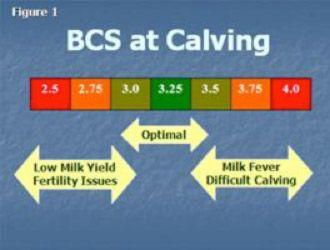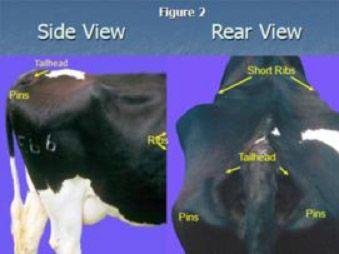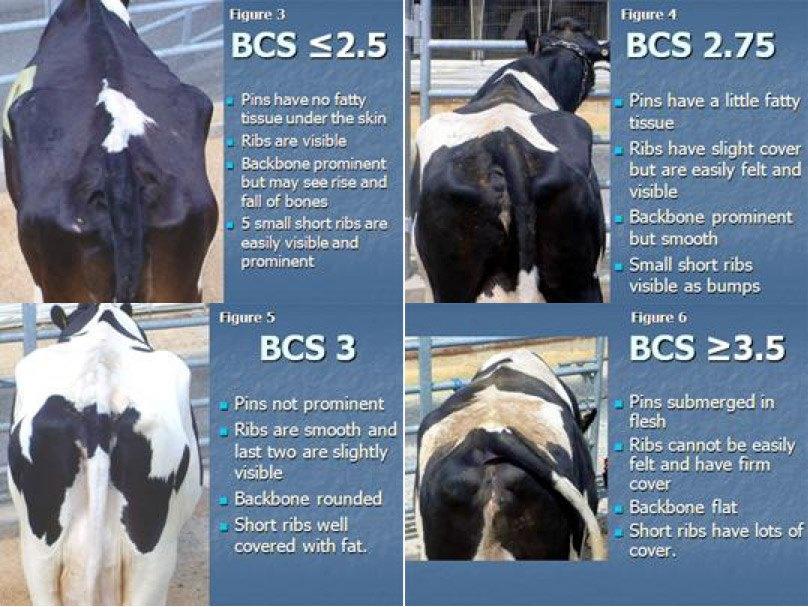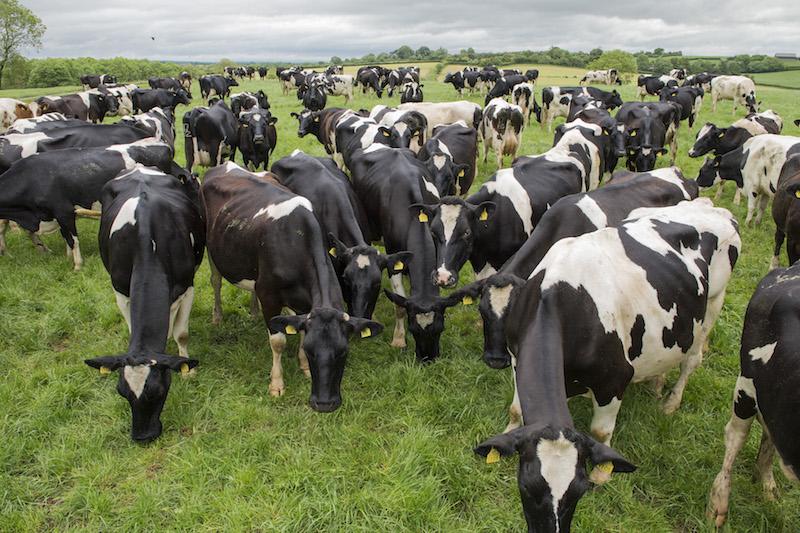BCS is a simple technique to assess how thin or fat a cow is on a scale of 1 to 5 with increments of 0.25, where 1 is extremely thin and 5 is extremely fat.
What are the key BCS targets?
- Calve cows at an average BCS of 3.25 (range 3.0 – 3.5)
- Ensure all cows lose no more than 0.5 of a BCS from when they calve down until the start of breeding. Aim for an average BCS score of 3.0 (range 2.75 – 3.25) at the start of breeding (see figure 1).

Figure 1

Figure 2
What are the benefits of achieving these targets?
- Cows calving below a condition score of 3.0 tend to have reduced milk yield and be harder to get back in calf. Cows calving at a BCS greater than 3.5 are likely to experience increased levels of difficulty calving’s, milk fever, retained cleanings and to have a lower feed intake in early-lactation (knock-on effect of losing more body condition). Figure 1 highlights this.
- Feed intake lags behind milk production in early lactation creating an ‘energy gap’ and forcing cows to ‘milk of their backs’. Minimising this energy gap and BCS loss is a key component in getting cows back in calf. This is much easier to achieve if cows are calved in the correct BCS.
When should cows scored to achieve these targets?
- Late lactation (before drying off)-Cows with a low BCS (<2.75) should be dried off early and fed properly to achieve target BCS at calving. Watch out for cows with a long dry period (dried off early due to quota), these cows can easily become too fat.
- All cows dry: If there are significant differences between cows in terms of BCS, they should be separated into different groups and fed accordingly.
- Monthly intervals in early lactation to avoid excessive BCS loss in early lactation.
How to Body Condition Score
- Scoring consistently requires handling cows (put cows in the crush and run your one hand over them) but an overall visual inspection is also important. Always handle the animal quietly and carefully using the same hand for consistency. Apply firm pressure on the 3 primary reference points (see figure 2).
- Pins and Tail Head-Use fingers to score by feeling for the amount of fat around the tail-head and the prominence of the pelvic bones.
- Short Ribs/Loin-Use flat hand to refine the score by feeling the boney projections and the amount of fat in-between.
- Ribs-Use flat hand to refine the score by feeling the boney projections and the amount of fat in-between.
- Examples of different BCS are shown in figures 3-6

Figures: 3, 4, 5, 6



